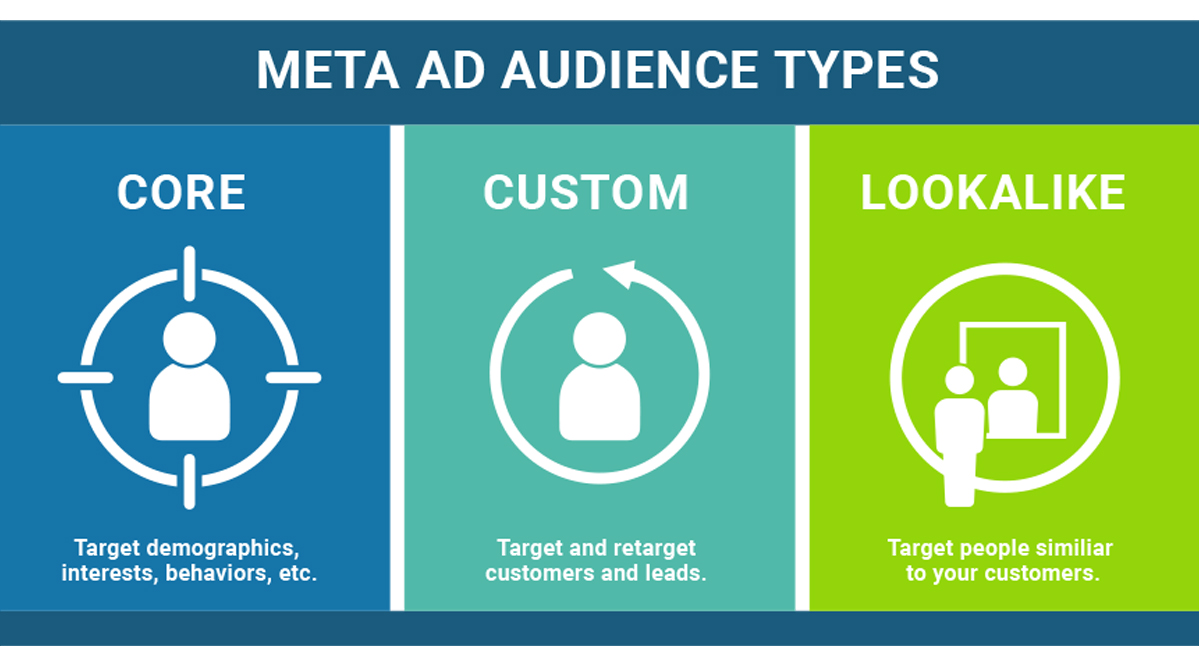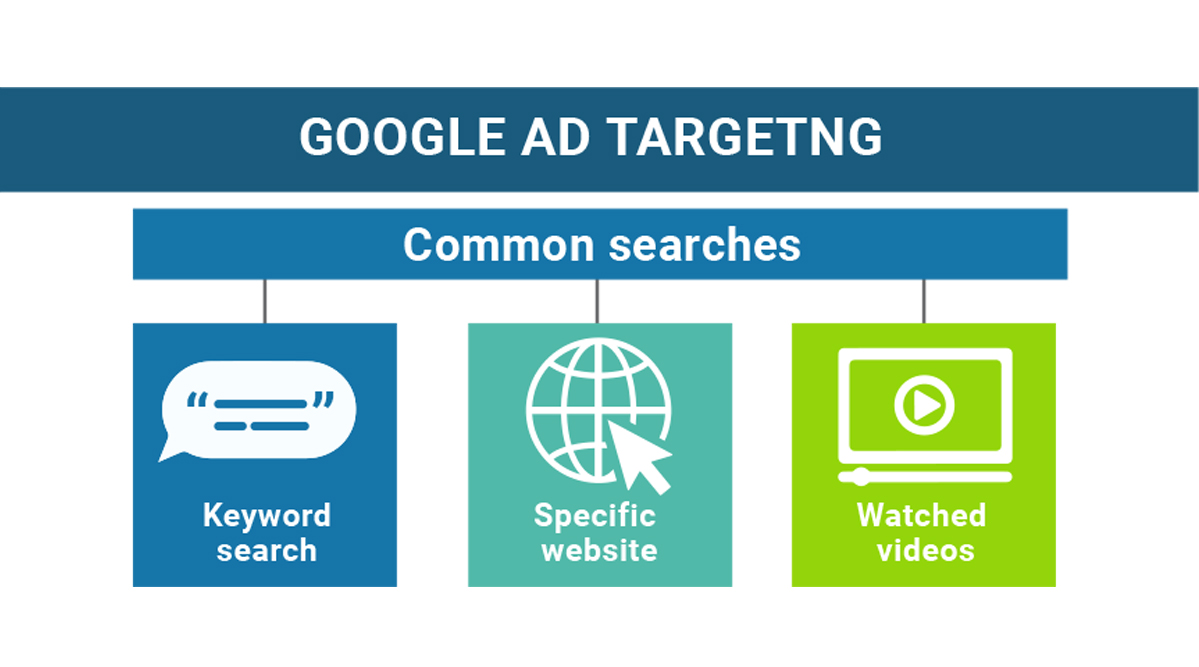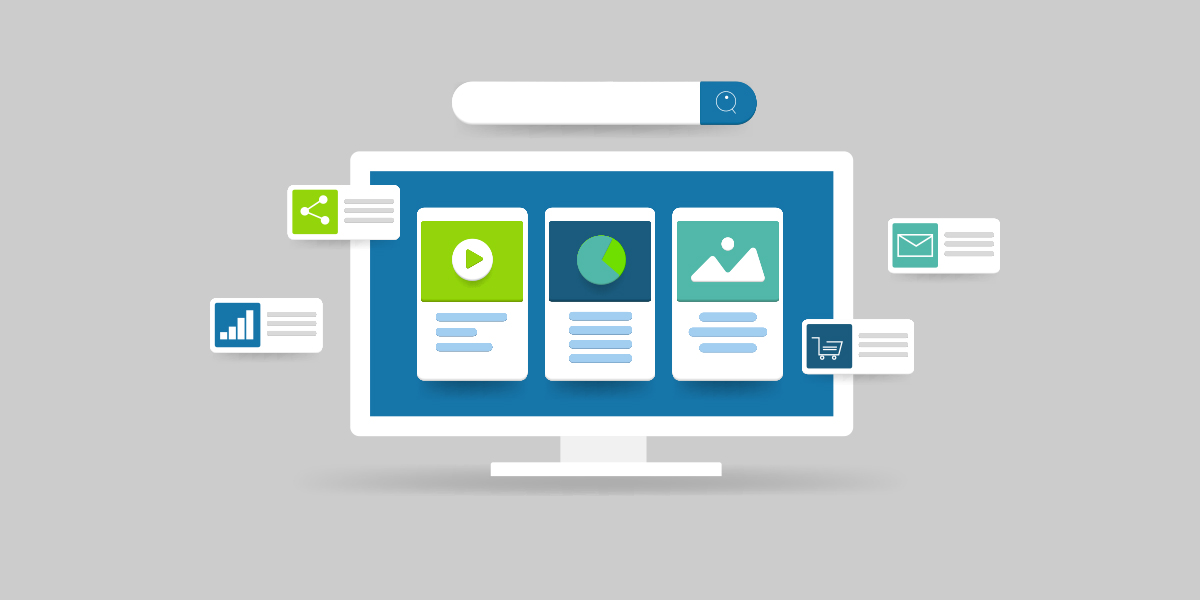You work hard in your manufacturing business to fine tune processes, equipment, and products. Targeting the details is the key to great results.
Precise targeting is essential to your marketing success, too. And with the right audience targeting with Meta and Google Ads, you can make it happen.
Join us as we explore how to leverage Meta and Google Ads to target ideal customers and drive unprecedented growth.

Start with a Strong Foundation
You and your team already know a lot about your target customers. You’ve made it this far by delivering effective solutions to their unique needs.
That’s why any effective audience targeting effort starts by taking stock of what you know.
1. Identify.
Identifying your target includes:
- Industry analysis – Including key customer segments, demographics, geographies, and known pain points
- Competitor analysis – Whom are your competitors targeting? How are they going about it? Look for underserved segments.
- Customer data analysis – Pay attention to customer feedback, sales data, and web analytics. Seek common characteristics.
2. Define.
Build on what you’ve learned in the identification phase through:
- Buyer personas – Paint a detailed picture of ideal customers. Include demographics, job titles, communication preferences, pain points, and goals.
- Segmentation – Categorize your targets based on industry, company size, and geographic location.
3. Enhance.
Consider the unique needs of your manufacturing customers. They may need:
- Technical expertise – What kinds of insights are they looking for? Tailor your messaging and content.
- Long sales cycles – Keep in mind that you need to engage customers over a long period. Develop nurturing campaigns to help bring them along.
- Many decision makers – Big purchases often need the buy-in of several different people. Create marketing materials that address the needs of all decision-makers.
Now, with your detailed foundational targeting in place, it’s time to put it to work.

Demographic Targeting with Meta
Meta’s extensive demographic targeting capabilities let you tailor ads to specific groups. Target based on age, gender, location, and job roles.
This way, you can deliver more relevant and effective ads to potential customers. Need to appeal to people in different roles? Job title and industry targeting can be especially beneficial for B2B manufacturers.

Behavioral Targeting with Google Ads
Google Ads’ targeting strength is a bit different from Meta’s. You may not have the depth of demographic intelligence you get with Meta. But you do have the ability to reach people searching for a manufacturing solution like yours.
And you can zero in on the right ones through Google’s behavioral targeting capabilities. Target based on search history, website visits, video engagement, and more.
For example, you can have Google serve your ad to people who:
- Searched “contract injection molding supplier”
- Visited a specific manufacturing-related website
- Watched videos related to your manufacturing services or products
The result? Increased relevance and engagement. You appeal to people who are looking for your solutions, right when they’re looking for them.
Interest-Based Targeting via Meta
Let’s say we know someone is visiting a particular website. Searching for a certain kind of product. Or watching specific videos. We can reach certain conclusions about these activities.
That’s where interest-based targeting begins. You can use Meta’s insights to target people who are likely to take interest in what you offer.
Target based on interest in:
- Hobbies
- Industries
- Education
- Purchases
Looking for Lookalikes
Who’s most likely to like what you’re offering? How about people who look like your existing customers!
Lookalike audiences allow you to reach people who share characteristics like customers you’ve already won over.
Start with a base audience of customers (ideally, your best ones). Cull from followers on facebook or instagram, email lists, website visitors, YouTube viewers, etc.
Both Meta and Google can find new targets with similar demographics, interests, and behaviors. You can specify how close you want the matches to be, depending on your goals.
In any case, you can uncover a great new group of prospects to pitch to.
Geotargeting for Local Impact
If your business has a limited geographic footprint, you’re going to want to zoom in on audiences in your areas.
Geotargeting lets you focus digital ads on specific regions. It uses IP addresses, GPS data, or other location-based signals.
The focus of your message is just as important. Localize your content with language, imagery, or case studies relevant to the region. Example: an automation provider targeting Midwest manufacturers might use images of robust local industries like plastics or automotive suppliers.

Dynamic Ads for Personalization
Here’s how technology can really start to simplify audience targeting. Put the algorithms of Meta or Google on the case.
First, there is a fair amount of setup involved with dynamic ads. You have to upload a whole catalog of advertising assets. Including product images, descriptions, different messages, etc.
But after that, the platforms take over.
Dynamic ads automatically personalize your content based on user behavior and preferences. This way, you increase relevance and drive more clicks at lower cost.
It’s great for:
- Featured products or services
- Seasonal promotions
- Limited-time offers
And dynamic ads are particularly well suited for our next topic:
Retargeting Strategies to Nurture Leads
Nobody buys anything the first time they’re introduced to a company. At least not in B2B manufacturing, where a sale often takes dozens of contacts over weeks and months.
If someone shows an interest—by visiting your website, for example—you have to keep bringing them along. That’s what retargeting is all about.
After a prospect stops by your site, retargeting continues to showcase your products or services. When they visit other websites or use social media, it keeps your company on their radar.
Combine retargeting with the dynamic ads we just discussed. That way, you can target them with offers that are most relevant based on what they’re doing online now.

A/B Testing to Refine Your Strategy
All right, you’ve got some solid targeting strategies in place. But how do you know what’s working?
A/B testing is a simple, vital way to settle the debate. Pit two (or sometimes more) versions of an ad head to head, and see which one wins.
These versions should be similar except for one clear difference. For example, each could have a different headline, CTA button, main image, etc. (But not all three, or you’ll have no way of knowing what’s making a difference.)
It’s also important to test with different target audiences. What works for one won’t necessarily click with another.
To get the best results, you need to keep A/B testing over time. Don’t assume that the one ad that came out on top last quarter is still the way to go. Test a different element and adjust again. The marketplace is always evolving—and you should, too!
Budget Allocation Based on Audience Segmentation
Not all leads are created equal. Some are more likely to convert to high-value customers.
By prioritizing these audience segments, you can optimize your budgets. That helps you reach the most valuable prospects and maximize return on ad spend (ROAS).
Let’s say you spot specific geographic regions where demand for your services is highest. You can allocate a larger part of your budget to these regions. Leverage the location-based targeting features we talked about.
This localized approach can maximize the impact of your dollars in key markets.

Monitoring and Analytics
Meta and Google Ads offer a treasure trove of data you can use to keep improving.
You can easily set up monitoring for key performance indicators including:
- Click-through rate (CTR)
- Conversion rate
- Cost per click (CPC)
- Cost per acquisition
- Conversion value
- Return on ad spend
Analytics data can shed light on audience behavior, engagement patterns, and conversion paths. Conversion tracking can show actions users take after clicking on your ads. Did they visit a website? Submit a form? Make a purchase?
You can also track your A/B tests, audience segmentation … and pretty much everything else we’ve talked about!

Straight Shooting about Audience Targeting
Clearly, there’s a lot to consider—and a lot to take advantage of—with audience targeting via Meta and Google Ads.
Making the most of the potential of Meta and Google Ads for manufacturers takes expertise, careful attention, and continuous refinement.
Audience targeting is one of the key ways Cahill Consulting helps manufacturing businesses drive growth. I invite you to explore how we can work together. Let’s make smart marketing investments and supercharge your sales pipeline!













